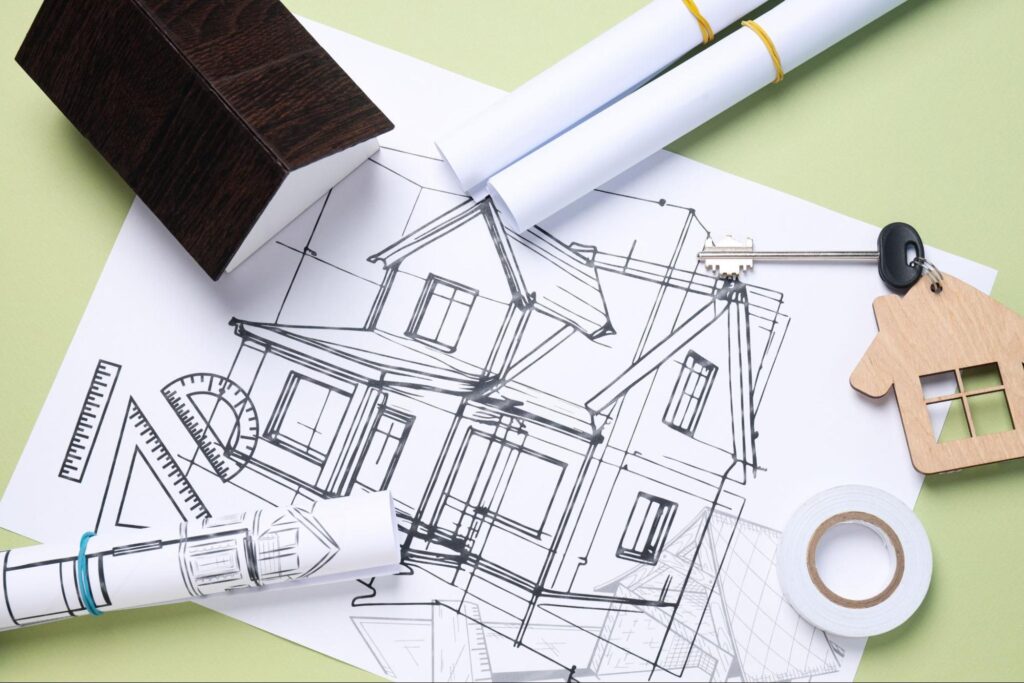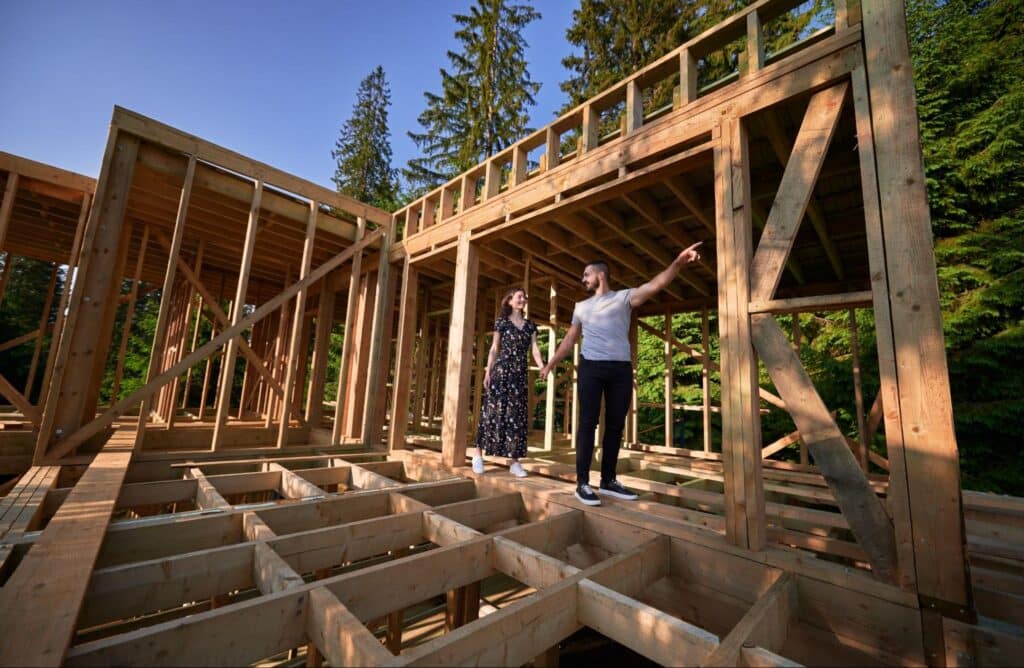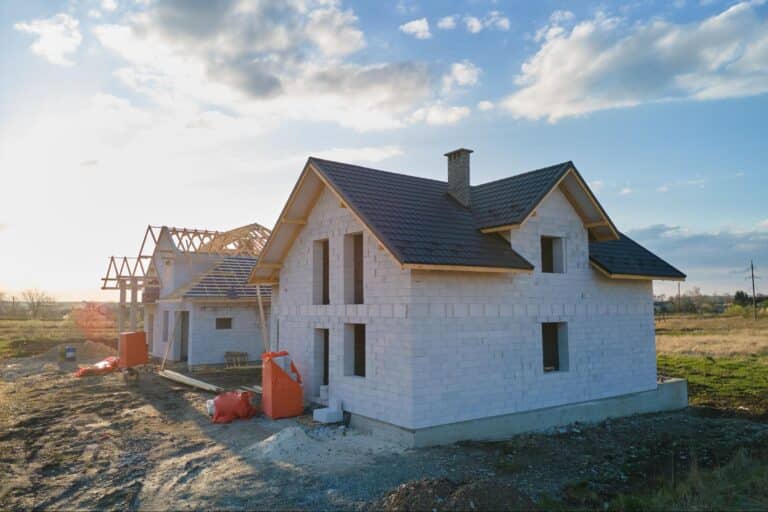Have you ever dreamed of building your own home without the usual hassle and uncertainty? For many prospective home builders and budget-conscious buyers in Indiana, the process can seem daunting. However, with the right partner and a clear roadmap, constructing a high-quality, affordable home is an entirely achievable and rewarding journey.
This guide is that roadmap. Value Built Homes specializes in simplifying the home-building process. We will walk you through four clear, manageable stages. We’ll start with the crucial first decision of whether to build, move into the detailed planning of the pre-construction phase, guide you through the excitement of the construction journey, and finish with the final steps of moving in and protecting your new investment. This is your ultimate guide to building with confidence.
Step 1: The First Decision – Is Building the Right Choice for You?
Building your own home offers cost control, customization, and the satisfaction of crafting a space that reflects your needs. However, it also requires thorough planning, a buffer for unexpected expenses, and the willingness to oversee many details. Consider:
- Are you prepared for sudden costs like changes in materials or weather delays?
- Does your timeline accommodate potential permitting or inspection setbacks?
- Can you partner with a builder you trust and communicate with effectively?
Weighing these considerations against the advantages of owning a fully personalized home can clarify whether building is your best path.
Step 2: Pre-Construction – Planning Your Dream Home

This is the most crucial phase of your entire home-building journey. Thorough and thoughtful planning here sets the stage for a smooth, on-budget, and enjoyable construction process. This is where your vision, budget, and location converge to create a detailed blueprint for your future home.
Land & Lot Selection: Finding the Perfect Location
Choosing where to build is one of the most significant decisions you’ll make. Indiana offers many options, including rural land, suburban subdivisions, and builder-owned lots. As Indiana Home Builders, we know that local conditions matter. Keep these tips in mind:
- Soil Quality: Confirm with a soil test that the land can support a stable foundation. You can also check a soil testing recommendation or locate local soil testing professionals for in-depth guidance.
- Zoning and Regulations: Investigate local zoning codes and any HOA or subdivision covenants to verify that your planned build and any exterior features comply with all requirements. Adherence to local codes is critical, as regulations can differ by county.
- Utilities Access: Confirm the availability of water, electricity, and sewage or septic systems. Budget for the potential costs of extending utility lines or drilling a well if you are building on undeveloped land.
- Neighborhood and Accessibility: Choose a location where you can comfortably commute to work, access community amenities, and enjoy the lifestyle you have in mind.
Remember to explore land from Value Built Homes if you want pre-vetted lots in desirable Indiana communities, tailored for a stress-free home building experience.
Budgeting & Home Building Costs Explained
A well-organized budget is the backbone of a successful build and is essential to avoid financial strain. It’s important to categorize your expenses clearly:
- Land Acquisition & Site Prep: This includes the cost of the lot, plus clearing, grading, and utility hookups.
- Permits, Fees & Inspections: Plan for all building permits, zoning fees, impact fees, and other related regulatory expenses.
- Construction & Materials: This is the largest category, factoring in all labor, structural materials, fixtures, and interior/exterior finishes.
- Contingency Fund: Construction experts universally recommend reserving 5% to 15% of your total budget for unexpected costs, such as material price changes, weather delays, or design upgrades.
Financing for new construction typically involves specialized construction loans that release funds in stages, which then convert to a traditional mortgage once the build is complete.
Choosing a Builder: Vetting the Right Contractor
A reliable and trustworthy builder is your most important partner in this journey. They are crucial for an on-schedule, on-budget project. When evaluating potential builders, consider:
- Licensing & Credentials: Ensure they hold active licenses and demonstrate a deep understanding of local Indiana building codes and standards. Check resources like NAHB’s TechNotes for up-to-date industry standards.
- Experience & References: Ask for a portfolio of completed projects, speak with previous clients, and look for a long track record of success in your area.
- Clear Contracts: Look for builders who offer fixed-price contracts, as these provide the greatest protection against budget overruns and unexpected cost increases.
- Communication Style: A great builder provides frequent updates and maintains transparent practices. This open line of communication is key to minimizing stress and misunderstandings.
Value Built Homes has extensive experience in Indiana, ensuring your house is designed with local conditions and modern living requirements in mind.
Home Design & Choosing the Right Floor Plan
Your home’s layout will define your daily life for years to come, so this step deserves careful thought. Your floor plan greatly influences both long-term livability and the overall cost of the build.
- Standardized (Simplified) Floor Plans: These are the most affordable and efficient options. They keep expenses down and accelerate the construction timeline by using pre-engineered, proven layouts.
- Custom Plans: Ideal for those with unique needs or a very specific vision, but they may increase costs and require additional time for architectural design and engineering.
When choosing, consider factors like room counts, storage needs, and features that match your family’s lifestyle, such as mudrooms, open-concept living areas, and covered porches that complement the Indiana way of life.
Permits, Regulations & Timeline Management
Navigating the world of permits, required inspections, and regulatory compliance can feel overwhelming, but a good builder will manage this process for you. These steps are designed to protect you and ensure your home is built safely.
- Required Permits: Your builder will work with local authorities to secure all necessary permits, from zoning clearance to construction and final occupancy permits.
- Inspection Schedule: Be prepared for mandatory site checks at critical stages, such as after the foundation is poured, once the framing is up, and when systems are installed.
- Timeframe: This administrative phase can take several weeks to a few months. Potential delays from weather, supply chain issues, or administrative hurdles can arise, so it’s wise to build a buffer into your overall schedule.
When partnering with professionals who understand Indiana’s specific processes—like Value Built Homes—you’ll be better prepared to handle these steps efficiently.
Step 3: The Construction Journey – From Foundation to Finishes
Once the intensive pre-construction planning is complete and permits are in hand, the most exciting phase begins: turning your blueprints into a physical home. The building process is a carefully orchestrated sequence of events. Staying involved and maintaining regular communication with your builder is key to ensuring the build meets your expectations.
Site Prep & Foundation
The first tangible step is preparing your land. This stage involves:
- Clearing and grading the lot to create a stable building site.
- Excavating for the foundation and any underground utilities.
- Pouring the foundation—whether a slab, crawlspace, or basement.
- Before moving forward, the builder and a local inspector will verify that the foundation is square, level, and meets all structural and code requirements.
Framing & Roofing
With the foundation cured, the skeleton of your home rises quickly. This is often the most dramatic stage of the build. Key steps include:
- Erecting the walls, floors, and roof trusses to form the home’s structure.
- Installing sheathing, roofing, windows, and exterior doors to create a “dried-in” shell that protects the interior from the elements.
Systems Installation (Mechanical Rough-In) & Insulation
Now the focus moves inside the walls, where licensed professionals install the home’s vital systems. This includes:
- Plumbing: Running all water supply and drain lines.
- Electrical: Wiring the entire house for outlets, switches, and fixtures.
- HVAC: Installing all ductwork for your heating and cooling system.
- Major Inspection Milestone: Before any drywall is hung, all systems are thoroughly inspected to ensure they are safe and up to code. After passing, insulation is installed in the walls and ceilings.
Drywall, Interiors & Exteriors
This is where the house truly starts to feel like a home as the aesthetic details come to life. The sequence of events includes:
- Hanging and finishing drywall to create smooth, paint-ready walls.
- Completing exterior finishes like siding, brick, or stone.
- Installing interior elements such as flooring, cabinets, countertops, and light fixtures.
- Regular communication with your builder during this phase is crucial to confirm that all finishes, colors, and placements align with your approved design plans.
Final Checks & Walkthrough
As construction nears completion, the final details come together. This last stage involves:
- Finishing exterior work, such as pouring driveways and walkways and completing final landscaping.
- Installing final interior touches like appliances and plumbing fixtures.
- A last set of official inspections are conducted to grant a Certificate of Occupancy.
- You will conduct a final tour with your builder to create a “punch list” of any last-minute items needing attention, ensuring every detail is perfect before you move in.
Step 4: The Final Stretch – Move-In and Beyond

The journey doesn’t end the day you get the keys. The final phase of the process is about transitioning from a construction project to your new life as a homeowner. Proper planning here sets you up for a hassle-free move-in and helps you protect and enhance your investment for years to come.
Move-In and Post-Completion Milestones
As your project concludes and you prepare to move in, a few key steps will ensure a smooth handover:
- Final Walkthrough: Before closing, conduct a final, thorough walkthrough with your builder. This is your opportunity to confirm that all “punch-list” items have been completed to your satisfaction and that the home is in perfect move-in condition.
- Collect All Documentation: Your builder should provide you with a comprehensive package of documents. This should include all appliance manuals, product warranties for things like windows and roofing, and a list of all finish details (e.g., paint colors, flooring types) for easy reference in the future.
- Understand Your New Home Warranty: A crucial part of the handover is understanding your builder’s warranty. Know exactly what’s covered—and for how long—regarding the home’s structural integrity, mechanical systems (HVAC, plumbing, electrical), and other key components.
Homeowner Education and Enhancing Long-Term Value
Once you’ve settled in, your focus shifts to maintaining and enhancing your property’s worth. Proactive homeownership demands consistent care and smart planning:
- Follow a Seasonal Maintenance Schedule: Stay on top of regular tasks to keep your home in peak condition. This includes routine HVAC servicing, roof and gutter inspections, and other preventative upkeep. To help you stay organized, you can download our New Homeowner Maintenance Checklist to track these essential tasks.
- Plan for Strategic Upgrades: As your needs evolve, you may want to add personalized features or energy-efficient improvements. Thoughtful upgrades not only enhance your lifestyle but can also boost your home’s overall market value.
- Keep Organized Records: Maintain a file for all your home’s important documents. Log all repairs, warranty information, and upgrades you make over the years. This organized history is invaluable for future maintenance and for demonstrating the care you’ve put into the home if you ever decide to sell.
Frequently Asked Questions
How long does it take to build a new home?
Most straightforward builds span six to nine months, but complex layouts, unforeseen delays, or specialized features may extend this timeframe.
What are common budget pitfalls?
Underestimating hidden expenses—like site prep or additional permitting—and failing to set aside funds for contingencies often leads to overspending.
How do construction loans work?
Construction loans release funds in stages, transitioning into a typical mortgage once your home is built and passes final inspections.
What should I think about when choosing a floor plan?
Make a list of must-have spaces and future needs. A plan that balances functionality with affordability typically yields the highest long-term satisfaction.
Achieving Success: Your Path to Affordable Home Ownership
Building your own home can feel like an overwhelming process, but it doesn’t have to be. By breaking down the journey into clear, understandable stages—from initial planning and budgeting to construction oversight and post-move-in care—you are empowered to make smart decisions every step of the way. A successful build is the result of this knowledge combined with a strong partnership with a builder you can trust.
Value Built Homes is dedicated to being that partner. We believe in empowering our clients with the information and support they need to build an affordable, high-quality home without the stress and uncertainty. If this guide has inspired you to move forward, contact us today for a consultation. Let’s start building your dream home in Indiana, together.




